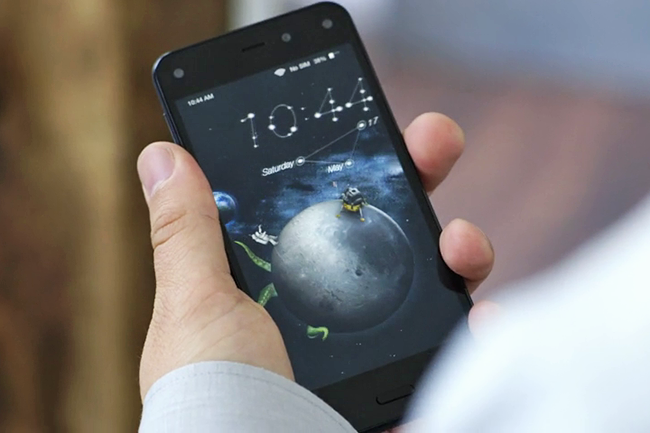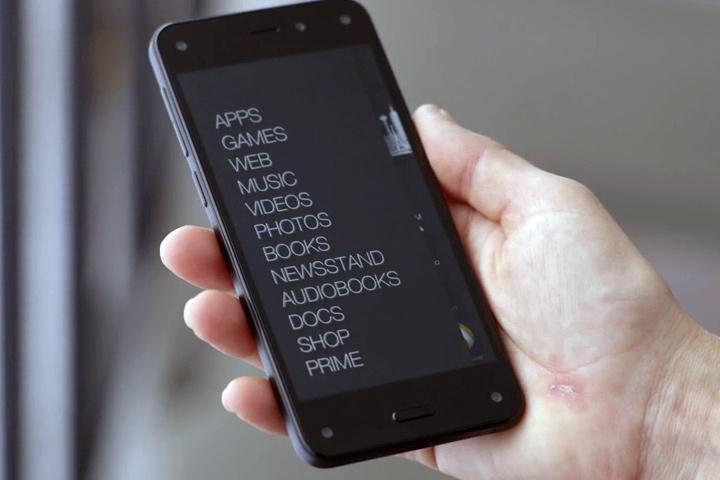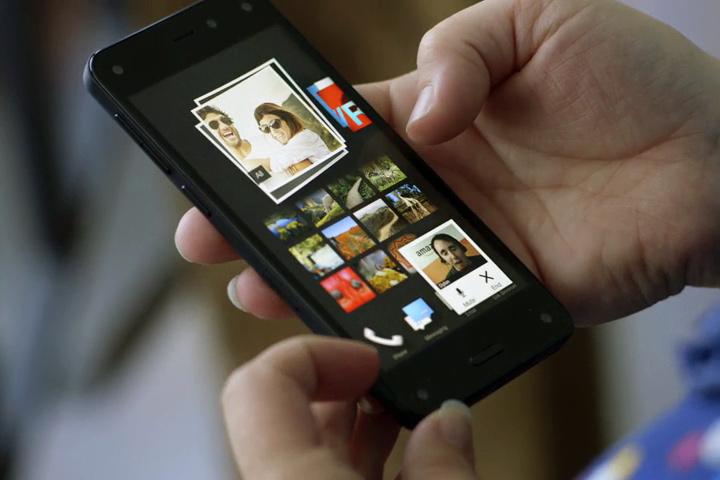
If Amazon had a brick and mortar store, I’d assume there had been a pricing error when I reached the checkout with a Fire Phone in my hand. What’s that? $200 with a two-year contract? No, there has to be a mistake. It says Amazon on the box, not Apple, and it’s prime reason for being is to make me spend money in the store. What happened to drawing me in with cheap hardware?
The Fire Phone’s price is so unexpected, you have to assume Amazon has been perusing the self-help books on optimism found on its virtual shelves. It simply isn’t a high-end brand. It’s not Apple, Samsung, or Sony, and it’s doubtful many image-conscious smartphone buyers picture themselves pulling the device from the pocket of their G-Stars. Nondescript devices are fine when they’re cheap, but the Fire Phone is aimed at the big-leagues.
What’s with the delusions of grandeur? It’s possible Amazon has been listening to the marketers. For several years, Amazon has topped global brand perception charts, beating names including Coca-Cola, McDonald’s, Nokia, and Microsoft. “What the hell,” an Amazon marketer may have said, “People love us, so let’s put out a premium smartphone to make some more cash.”
Don’t listen to the marketing department, Amazon
It’s a solid idea, except what the man in the turtleneck shirt and oversized spectacles didn’t remember, is that Amazon’s excellent brand perception is based on perceived value over price paid. In other words, we think Amazon sells us quality goods at a very competitive price. The Kindle Fire tablet is proof of this. It’s cheap, and it works well. The Fire Phone isn’t cheap at all, and doesn’t even have the good grace to come with top-end specs to justify the high price.
The 3D nonsense is a feature nobody asked for, and the rest of the specs don’t stand up to the Galaxy S5,
A 2011 article in Ad Age quoted the director of brand specialists Millward Brown, who said many of the companies featured in the top ten could “afford to raise their prices,” because the gap between value and price was so huge. There’s evidence Amazon has been listening too, having already slapped an extra $20 on Amazon Prime. Amazon sees it as confidence, but history may show it to be arrogance.
Where’s the value?
Despite the increase, Amazon Prime is still good value. The Fire Phone, on paper, isn’t. The 3D nonsense is a feature nobody asked for, and the rest of the specs don’t stand up to the Galaxy S5, or any other true high-end Android phone. The screen rivals the cheaper Moto X, which benefits from less gimmicky and more useful voice control features. Those invested in the smartphone spec war will almost certainly pass, then, as will anyone wanting the sexiness of an Apple product.
Android fans won’t want the Fire Phone either, because it can’t run the Google Play Store, and doesn’t come with Google’s own apps installed. So who will buy it? Amazon fanboys, who will use it when wearing their homemade Amazon polo shirt, while they stack cardboard boxes in a mock-up of an Amazon warehouse.
You’re just not cool enough to pull this off, Amazon
High-end smartphones are supposed to be really cool. The One M8, the Xperia Z2, and the iPhone 5S are all properly desirable, and come with a recognized brand name attached. After spending that amount of money, most people want their friends to know and be slightly envious. The Fire Phone is a bit dreary to look at, has a gimmicky headline feature, and is ultimately a cynical new way to spend more money with Amazon. It’s a compromise, and owners must put up with it while suffering the ignominy of advertising how much they love an essentially faceless retailer.
Amazon’s basic Fire Phone will cost you $1,640 over two years, provided you take AT&T’s cheapest option, or $1,540 if you take into account the year of free Prime membership. A Moto X or a Nexus 5 costs nothing on a contract, or around $350 without one. The Amazon website is free to use, and there’s an app for your phone too. If that’s not enough, a Kindle Fire HDX is $230. There’s simply no good reason to buy the Fire Phone. Amazon’s obviously confident its brand is strong enough to catch roving eyes, but will yours, or anyone else’s, really ever wander in the Fire’s direction?
Editors' Recommendations
- Amazon Fire HD 10 and Fire Max 11 prices slashed… for now
- A surprise phone just beat the Galaxy S24 Ultra in a big way
- The Galaxy S24 Ultra beats the iPhone in the worst way possible
- As a parent, there’s one iPhone 15 feature I can’t wait to use
- Samsung Galaxy Z Flip 5 price: here’s exactly how much it costs






